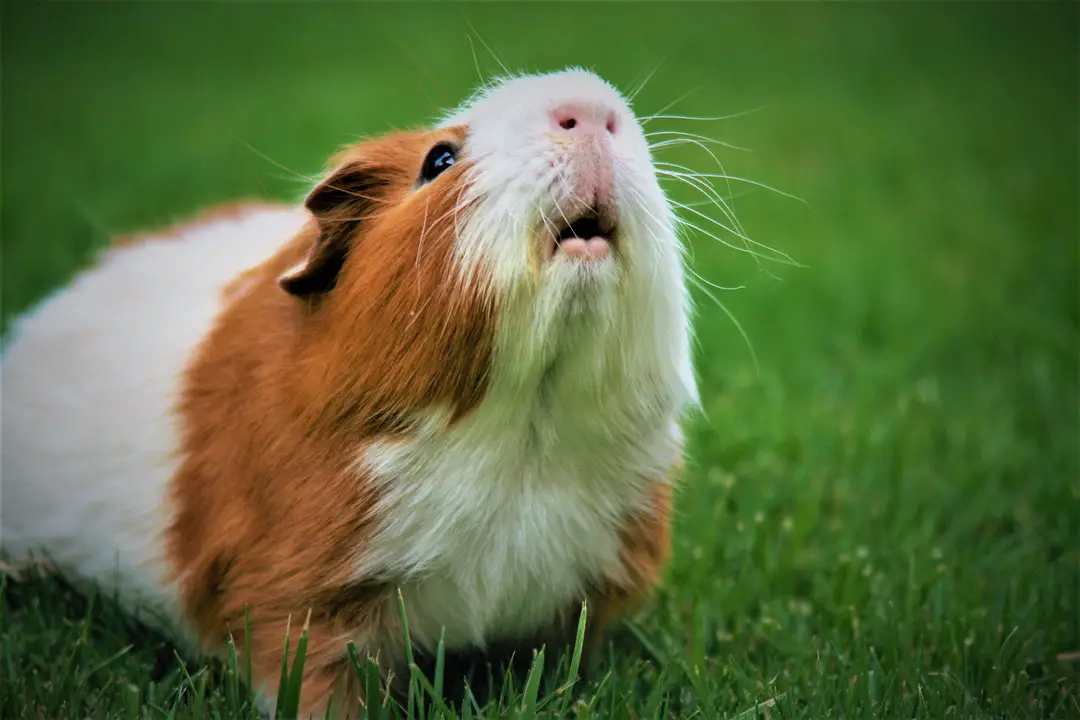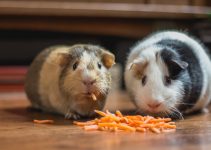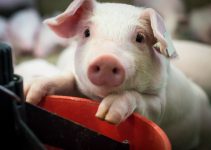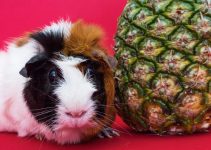Did you know that there are five species of guinea pig found in the wild and fourteen domesticated breeds? Each of them has its own unique traits, including the size and speed it grows at. If you have a young guinea pig and don’t know the breed, do you know when it will stop getting bigger?
If not, then we can help. Read on as we answer the question “When do guinea pigs stop growing?” in our essential guide.
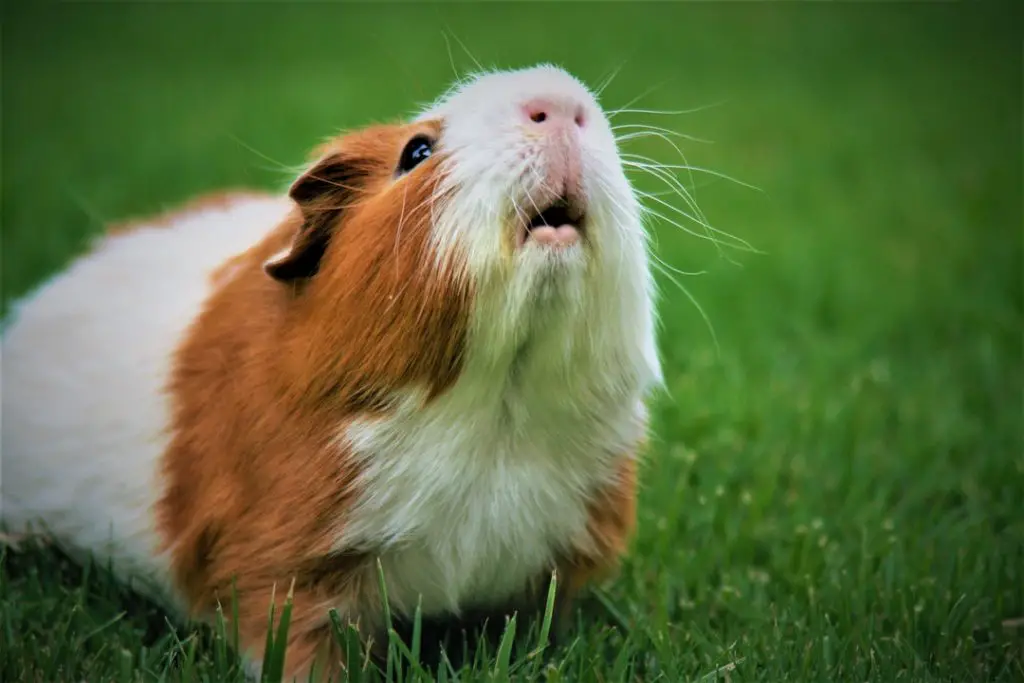
Contents
- 1 When Do Guinea Pigs stop Growing?
- 2 How Big Are Guinea Pigs as Adults?
- 3 Factors Affecting the Size of a Guinea Pig
- 4 Guinea Pig Size and Growth Chart
- 5 How to Tell the Age of a Guinea Pig
- 6 How to Measure Your Guinea Pig
- 7 What Are the Main Guinea Pig Breeds?
- 8 Guinea Pig Care and Diet
- 9 Finding the Perfect Pet
When Do Guinea Pigs stop Growing?
When your guinea pig reaches the age of 14 months, its growth should slow substantially. Only marginal growth may occur between this time and when it reaches adulthood at 6 months. The average guinea pig will be between 8 to 12 inches in length or around 20 to 30 cm.
How Big Are Guinea Pigs as Adults?
Guinea pigs are very light. They will only reach 1.5 to 2.6 pounds or around 700 to 1200 grams in weight if they are healthy.
Factors Affecting the Size of a Guinea Pig
The most obvious size factor is the gender of your pet. Males can be substantially bigger than females. They will each this size by growing much faster than females, though both genders stop growing at around 14 months.
The diet of a guinea pig can also impact its growth. However, if fed properly all guinea pigs should keep in line with similar ones in species and gender. If not, there may be a problem present.
Breeding is the most common factor that determines size in guinea pigs. They all have different rates of growth and sizes. This makes it vital you check the breed before taking one on as a pet.
Guinea Pig Size and Growth Chart
Below is the average healthy weight you can expect a guinea pig to be at various ages. Keep in mind that these are only an average.
- 2 Weeks – 150 to 250 grams
- 4 Weeks – 285 to 400 grams
- 6 Weeks – 350 to 550 grams
- 8 Weeks – 400 to 700 grams
- 10 Weeks – 500 to 800 grams
- 12 Weeks – 550 to 900 grams
- 14 Weeks – 600 to 950 grams
As mentioned above, there are a number of factors that can change this. Diet, breed, and gender will all contribute. Should you be worried about your pet, then consult a veterinarian.
How to Tell the Age of a Guinea Pig
Once a guinea pig has reached maturity, it can be hard to work out its age. The only true way is to visit a veterinarian. However, there are some age-related factors you can check.
One to Eleven Months
This is the easiest period in which to tell a guinea pig’s age. Baby guinea pigs will grow rapidly, almost every month. Younger guinea pigs will have very small, white teeth and translucent claws.
One to Five Years
Once a guinea pig hits the first year, there are very few signs you can take to divulge the age. The only real sign is by looking at the teeth, which turn to a yellow color as the animal ages. Duller-colored teeth mean it is more likely to be closer to five years old.
Five to Seven Years
These are the years when your guinea pig has entered old age. Their nails may become thicker and more brittle, and their hair may start to thin. You will also see them begin to slow down and make less movement.
How to Measure Your Guinea Pig
To measure your guinea pig, get a tape measure or ruler. Place the guinea pig on a flat surface and run the tape measure or ruler along the side of it. Make sure it is parallel to the body.
It will be hard to get an exact measurement. Your guinea pig is unlikely to stay still, so try to get an approximation.
What Are the Main Guinea Pig Breeds?
One of the major size factors is the breed of your guinea pig. We have collected the main ones below.
Abyssinian
The Abyssinian is favored by many first-time owners. They are very social and affectionate, as well as cute and furry. Guinea pigs of this breed are characterized by lots of colored swirls resulting in large tufts, which make it appear larger than it is.
American
The American guinea pig is the most common type and the one you are most likely to see in pet shops. Extremely social, they have a relaxed temperament which makes them great as a pet.
Baldwin
Baldwin guinea pigs have no fur, making them easy to spot. They have a guinea pig lifespan of around six years. As they are hairless it is important to keep them warm and indoors at all times.
Peruvian
Peruvian guinea pigs have a very distinctive look, with long flowing locks on the top of its body. As they have such luscious hair, they require a lot of grooming. Alert and curious, they look even more cheeky by having a fringe that grows over the front of their head.
When Do Guinea Pigs Stop Growing depends on many factor including care and diet. Continue reading to learn more
Guinea Pig Care and Diet
Fibrous foods, along with low calcium and high vitamin C provide guinea pigs with a healthy diet. The bulk of this comes from hay, which should be supplied at all times. Feeding them on Timothy Hay-based pellets is a standard option.
Along with this, leafy greens and vegetables should provide the vitamins in a guinea pig diet. As they don’t produce vitamin C, bell peppers and tomatoes are essential. Broccoli, kale, carrots, and asparagus are all foods your pet will love.
Foods to avoid are generally ones that provide little nutrition other than water, such as iceberg lettuce and cucumber. Fruit should be avoided as a high concentration of sugar can lead to severe diarrhea. Nuts, cereals, and seeds are too high in carbohydrates and fat for guinea pigs.
Other than this they should have an unlimited supply of fresh water. Use sipper bottles, as this means guinea pigs can’t defecate and urinate in them as they may do with bowls. Clean tubes and bottles out on a daily basis.
Finding the Perfect Pet
Now you can answer the question “When do guinea pigs stop growing?” you can see that they don’t take up much space. With their relaxed, social temperament they are a great pet. All they need is an easy-to-maintain healthy diet and they will be a great addition to your house.
For all your pet help and assistance, Animal Fate should be your first stop. With articles on everything from birds to pigs, all your questions can be answered on our site. Click here to read all our articles on dogs!
